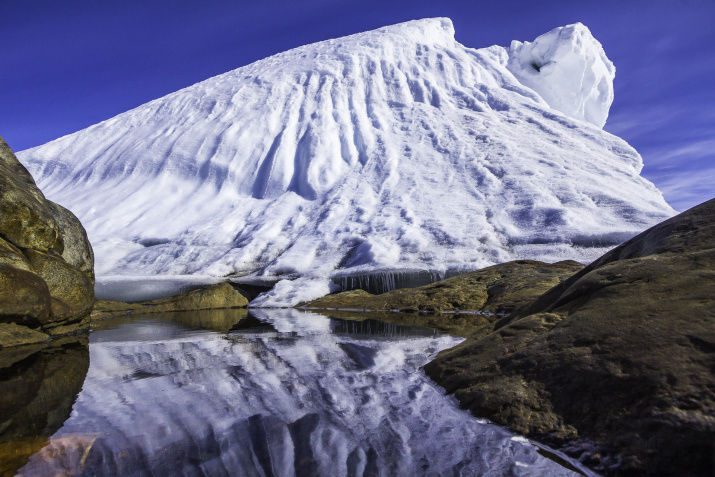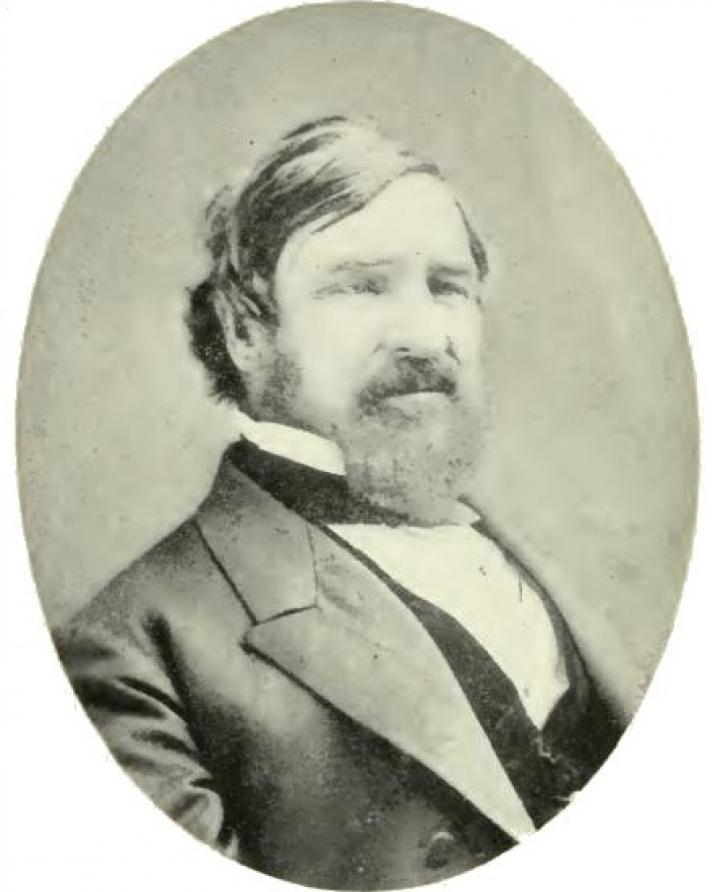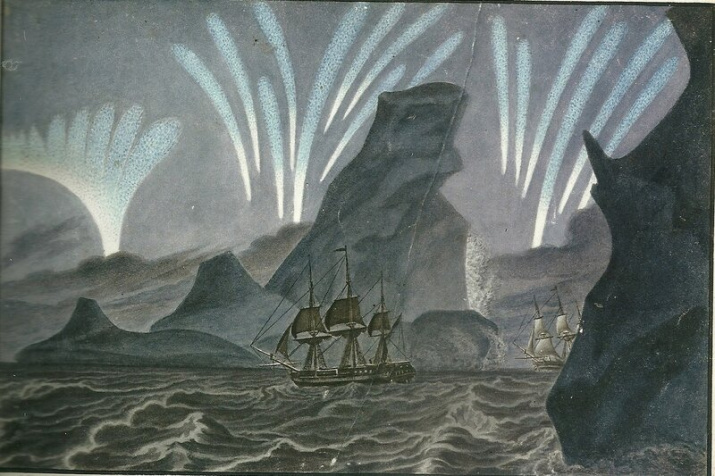To be the first is always flattering, even if this title does not give you any privileges. So, the British, the French, and the Norwegians claim to be the discoverers of Antarctica. However, at the first consideration of their arguments, any doubts disappear that it were the Russian sailors who found the new continent on the sloops "Vostok" and "Mirny" on January 28th, 1820. Details in the article.
Finding the mainland
The fact that there is an unknown continent at the South Pole, scientists assumed back in ancient times, but could not verify due to technical equipment.
During the Age of Exploration, in 1502, Amerigo Vespucci expressed his hunch about the southern continent. Portuguese sailors were stopped by cold weather many miles away from the sixth continent. The Englishman, James Cook, advanced farther than others into the Antarctic waters. In 1775 he reached a record for that time southern latitude - 71 ° 10 '.
Direct speech:
“At four o'clock in the morning, we perceived the clouds, over the horizon to the south, to be of an unusual snow-white brightness, which we knew denounced our approach to field-ice. Soon after, it was seen from the top-mast-head…It extended east and west, far beyond the reach of our sight. In the situation we were in, just the southern half of our horizon was illuminated, by the rays of light reflected from the ice, to a considerable height. Ninety-seven ice hills were distinctly seen within the field, besides those on the outside; many of them very large…"
A Voyage Towards the South Pole and Round the World, Volume 1 by James Cook
Some geographers believe that on this clear day, British travelers saw an ice shelf barrier adjacent to the modern Walgreen Coast. Others, for example, Konstantin Markov, are sure that "of course, he could not see the mainland at a distance of 150 km" [1].
Experts believe that with his voyage the famous Briton did everything to “hide” Antarctica. In 1775 he wrote: "I circumnavigated the Southern Ocean and rejected the possibility of the continent existing."
In 1819, at the same time as the Russian sailors, a British ship headed by Captain Edward Bransfield set sail for the shores of Antarctica. According to British historians, on January 30th, 1820, he discovered the Trinity Peninsula at the northernmost part of the Antarctic Peninsula. The British honor him as a discoverer, however the ship's logbook of this journey has disappeared for some mysterious reason, and it is impossible to verify the truthfulness of his journey.
The Americans honor their "discoverer." In December 1821, as a part of the Pendleton sealing fleet, Captain Nathaniel Palmer traveled northeast along the edge of the fast ice of the Antarctic Peninsula on the 80-ton James Monroe sloop. And on December 4th, 1821 he reached the Mordvinov(Elephant) Island, following the route Bransfield and Bellingshausen had travelled the previous summer. Accurate reports of his voyage were not preserved. Allegedly, along with another captain, George Powell, he discovered the South Orkney Islands. Palmer pursued purely commercial interests. Not finding abundance of sea animals on the islands, he sailed back. This story was widely covered in the American press and discussed even overseas.
Discoverers
And yet, just as there can only be one first past the post, the first discovery of Antarctica was one and only. It happened on January 28 [16]th, 1820. The weather was clear. In front of the Russian sloops “Vostok” and “Mirny”, thick drift ice arose, which covered the space up to the horizon. In the ship's journal, Mikhail Lazarev wrote: “hard ice, extremely high ... It stretched as far as eye could reach.” It was on this day that sailors discovered Antarctica, approaching close to it at 2 ° 14 '50"W and 69 ° 21' 28"S.
Direct speech:
"... when we reached the latitude of 69 ° 25'S and longitude of 2 ° 10'W, we met continuous ice, overlapping in pieces at the edges, and ice mountains are visible in different places to the south. From here I intended to sail through ice to get more to the south, but the opposite wind from the east prevented me from fulfilling my intention. Maneuvering a little to the east, from the 19th to the 20th, I again went south, however, and this time met continuous ice in latitude 69 ° 20 'S, longitude 0 ° 50'W ... "
Head of the expedition, Thaddeus Bellingshausen, in the report to the Maritime Minister of Russia, Marquis Ivan de Traverse
Direct speech:
"Among the ice, only penguins greeted us. The presence of these birds does not mean the proximity of the land, ice for them replaces the earth's firmament."
Expedition`s astronomer, Ivan Simonov, Astronomical and physical observations made while traveling around the world
Russian sailors could not be fully sure that they had discovered a continent, but it was clear that the land area they discovered was very vast. Thaddeus Bellingshausen noted: "The huge ice that, as it approaches the South Pole, rises into the gently sloping mountains, I call mature, assuming ... that this ice extends across the pole and must be motionless ...".
Soon there was a second approach to the shores of Antarctica. Mikhail Lazarev wrote: "... from the 5th to the 6th [February 1820] reached the latitude 69 ° 7’30”S, longitude 16 ° 15 ’E. Here, behind the ice fields of fine ice and islands, a continent of ice is visible, whose edges are broken off perpendicularly, which continues as far as we can see it, rising to the south like a coast. The flat ice islands, located near this mainland, clearly show that they are fragments of this mainland, because they have edges and a top surface similar to the mainland ... "
A harsh Antarctic winter was coming.
Direct speech:
"Ignorance of the ice; the storm; the sea, pitted with deep holes; the great rising waves; thick gloom and snow that hid everything from our eyes; and at that time night fell; it was a shame to fear, and the toughest man inwardly repeated: "God save me! "
Thaddeus Bellingshausen, The voyage of Captain Bellingshausen to the Antarctic seas 1819-1821
Following the expeditionary assignment of the Maritime Minister of Russia, de Traverse, the sailors left the high southern latitudes during the winter and headed to Australia, to the port Jackson, present Sydney. Here the crew stocked up with food, fresh water, and firewood. Drawings by the academician of painting, Pavel Mikhailov, tell about those lands that, after the chilling Antarctica, seemed to the sailors to be a paradise.
On October 31st, both sloops headed south again. They were going to go around the mysterious mainland, now from the other side. The Russian sailors celebrated the new, 1821, year beyond the Southern Arctic Circle.
The expedition lasted a year and a half. Things came full circle. Russian sailors went around and put on the map the vast space of the southern polar region. The white spot found its name - the continent of Antarctica.
Direct speech:
"July 24th. At 6 a.m. on July 24th we reached Kronstadt, saluted the fortresses and anchored in the very place from which we had set off. Our absence lasted 751 days; of this number of days, we moored at 224 in different places, for 527 days we were sailing; sailed 86,475 versts (49,860 miles) in total; this space is 2 ¼ times larger than large circles on the globe. During our voyage, twenty-nine islands were found, including two in the ice cap climate, eight in the southern temperate climate, and nineteen in the tropical climate; acquired one and coral shallow with a lagoon. "
Thaddeus Bellingshausen, The voyage of Captain Bellingshausen to the Antarctic seas 1819-1821
The first Russian Antarctic expedition can safely be called a model one. In a year and a half, one hundred days of which were spent in the ice, only three people lost their lives: two sailors fell off the masts during a storm, and one died from an exacerbation of a chronic disease. We would like to note, that, unlike with the British, there were no frostbite, pneumonia or scurvy.
Byproduct
In addition to the sixth continent, Russian sailors discovered and mapped 29 islands and a coral reef! The first major discovery was made on December 22nd, 1819. Bellingshausen named the whole group of islands in honor of the Russian Naval Minister, the Marquis de Traverse Archipelago. Such veneration of dignitaries was considered good manners. All subsequent discoveries carried the names of the expedition members. These are the islands of Zavadovsky, Leskov, the island of Torson and others.
Direct speech:
"Captain Cook was the first to see these shores, and therefore the names given to them must remain indelible, so that the memory of such a brave navigator could reach to later descendants."
Thaddeus Bellingshausen on the name Sandwich Land, The voyage of Captain Bellingshausen to the Antarctic seas 1819-1821
It’s not enough to discover ...
So why do scientists from different countries argue about who first saw Antarctica and called it the continent? It is not enough to make a geographical discovery; we must talk about it. And it is advisable to be heard overseas.
Four members of the expedition wrote about the first voyage to the high southern latitudes. The main work - "Two-time exploration in the Southern Arctic Ocean and sailing around the world ..." - by the expedition leader Thaddeus Bellingshausen was published only seven years after the discovery. The manuscript was handed over from the editor to the editor until Nicholas I personally intervened in the situation. The book was published only in 1831 and with only 600 copies.
Abroad, the book of the Russian admiral remained unknown for many years. Even foreign geographers did not know about it until 1863, when a cartographer, August Petermann, obtained a copy and published excerpts from there in German. Without cuts, the book was published in Germany at the beginning of the twentieth century. The English translation of "Two-time exploration ..." was released only in 1945, when Great Britain became somewhat closer to the USSR. The initiator of the publication is the polar explorer and historian, Frank Debenham. He was the first in the West to talk about Russia's priority in opening the sixth continent.
Even less fortunate were the labors of the rest of the expedition. Astronomer, Ivan Simonov, published his expedition notes in the scientific journal of Kazan University, which, even now, in the era of the Internet, is not the most popular publication. And the diary of midshipman Novosilsky was published in the middle of the nineteenth century without indicating the name of the author; by this time he had become a censor and did not want publicity. The book was reprinted only in the 1950s.
Natalya Mozilova
[1] Марков К. Путешествие в Антарктиду. М., 1957.










